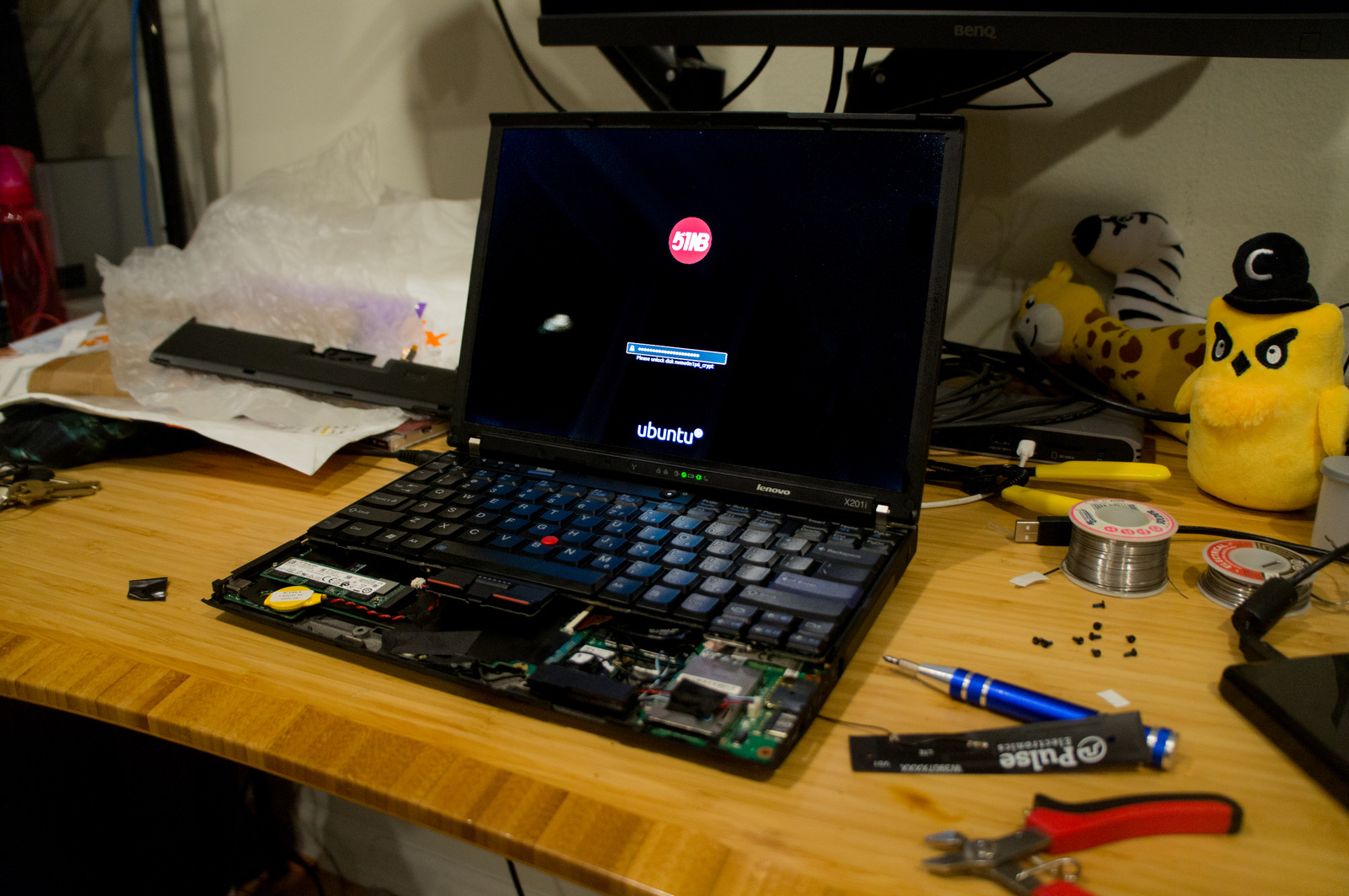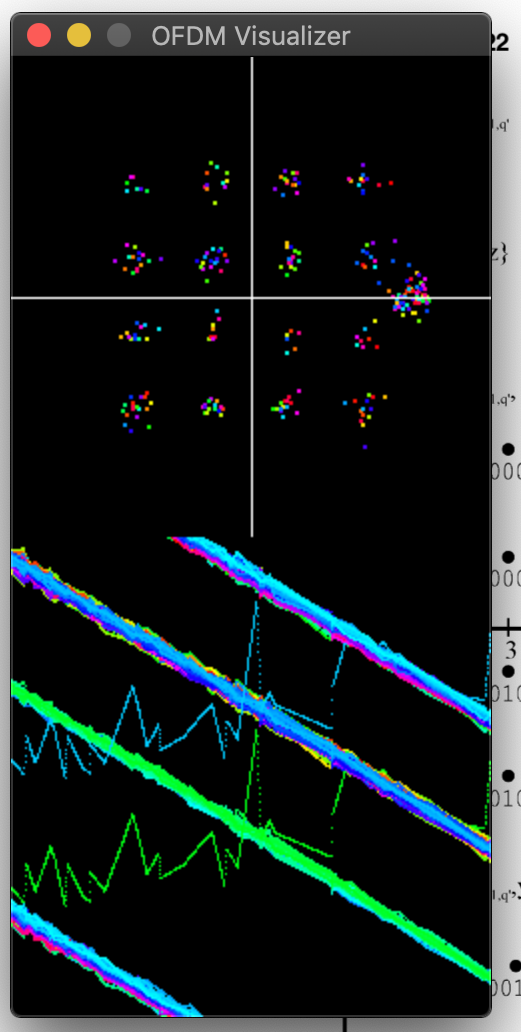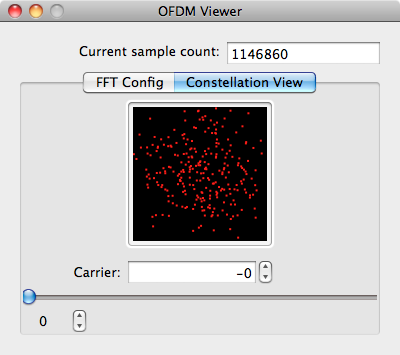A few months ago, I wrote a little review of the Wahoo
ELEMNT BOLT, and a miniature teardown of the software on it. I was
surprised to find that it, in fact, ran Android, but that the license
compliance story on it was not great. Over the intervening time, though,
I've been exchanging some mail with Chip Hawkins, the CEO at Wahoo, and it
sounds like they're working on getting the licensing story all fixed up
there -- and, to my surprise, that engaging with the enthusiast community is
something that they are interested in! So, this post has a short update on
some of those discussions, and my experiments so far in modifying the thing.
My initial post led off with this arguably clickbait-like statement that the
device was in violation of its myriad licenses, so I think it is only fair
to the Wahoo team to give an update on where that stands. As of the time I
write this, source isn't available for the GPL components, and attribution
isn't in place for the Apache components, but as far as I can tell, Chip and
his team are pretty serious about getting this squared away. They have a
release pending that has been occupying basically all of their engineering
time, which also will have some UI changes; so, for the attribution
components, they plan to include those in the new UI, rather than running a
fire-drill to retrofit that a branch that is unlikely to see another release
again. This makes sense to me. My impression is that the next release will
have attributions included, then, and kernel source for that release will go
out with it, too. They seem to understand what components they need to
release source for, and where to look for other licenses that they need to
include. So, my claim is that anyone who wishes to be mad about there not
being source available yet, should wait for the next release -- it does
sound like they are trying, and have a plan to get into compliance! The Android app already has an attributions tab, which is a good start, and I hope that they get the on-device software squared away soon too.
Chip also gave me some information on doing some hacking on the device,
which is exciting. They plan to release a recovery image (for Android
people, this is a full update.zip, including boot,
/system, and userdata images) along with the next release,
but until that is ready, one caveat to all of the following is that would-be
hackers must be extremely careful, because there is currently no image
available to restore a device from unless you create one, and further, that if you modify
the root filesystem, then the device will no longer be able to take
over-the-air updates until you restore it from backup.
With all those warnings said, here are some tricks to get you started
messing with the device. I mentioned in my previous post that the device
had an ADB daemon running, but it wasn't accessible; as it turns out, there
is a key shortcut to get access to it! If you press the power button and
the up button on the right side at the same time, the ADB daemon should
unlock. Chip notes that it's best to press them a few times in a row in
order to ensure that the event actually happens; after you do that, unplug
the device from your computer, then plug it back in, and you should be able
to adb shell in. For me, the ADB daemon was already running as
root, but if this wasn't the case for you, I am told that adb root
should work.
Since there isn't a recovery image available yet, I recommend that the first
thing that you do is to make your own. To get a bare minimum backup of the
system image on your device, you might want to run something like for i
in boot system recovery nvdata ; do adb pull
/dev/block/platform/mtk-msdc.0/by-name/$i elemnt-backup-$i.img; done,
which will grab a backup of, at least, everything you need to reflash a
known-good bootable configuration onto your device.
Once you have boot and system partition images, you are
now in a much safer position to explore the device. The other step that you
might want to take is to unlock the bootloader on the device, so that you
can flash those images again if you need to. The ELEMNT devices run
Fastboot, but they have a very finicky version of Fastboot running on them;
as far as I can tell, after every command, you need to unplug and plug the
device back in, or else it will not respond to you again. Unlocking
the bootloader will wipe any data that you have on the device, so
make sure to back up anything that you want (either using ADB, or over MTP
with Android File Transfer) before you do it!
To boot the device into Fastboot, turn it all the way off, then hold the
"down" button on the right side while pressing the power button. If
everything goes well, it will give you a black screen, and present a
Fastboot interface over USB. Run fastboot oem unlock on your
computer side; you'll get a message like "waiting for user" or something of
that nature. When you do, press the power button once, and wait; you'll
eventually get a message like "erasing user data...", and then the device
will be unlocked. To be sure of that, you can unplug and plug the USB
connection back in, and then run fastboot getvar all; in there,
you'll see the message "unlocked: yes". When you're ready, you can then run
fastboot continue, and your device will continue to boot. If you
get yourself into trouble later, you can restore your backup with something
like fastboot flash:raw boot elemnt-backup-boot.img, and similarly,
fastboot flash system elemnt-backup-system.img.
I had been putting this post off for a while, since I had planned to try to
modify the .apk that runs the thing. Sadly, I never really got
time to do that. But I did get mail from Chip saying that he didn't have
objections to people redistributing modified system ROMs -- and modified
BoltApp.apks. So what I'm hearing is that, for the enterprising
hacker with spare time, this could be a fun toy! He notes that the launcher
is pretty careful about monitoring the main app for crashes, and that there
are intents that you can send the launcher to make it happier; I tried
decompiling the launcher, but found that the version of Android that runs on
the device is not compatible with any of the de-odex tools that are out
there. So that also sounds like future work.
Anyway, I'm still using mine. I still wish it would boot faster, and
especially that it would restore a paused ride faster. I also wish that it
would show me sunset times. But I've put a few hundred miles on mine by
now, and it hasn't eaten a ride yet. And that makes it better than my Edge
510.



